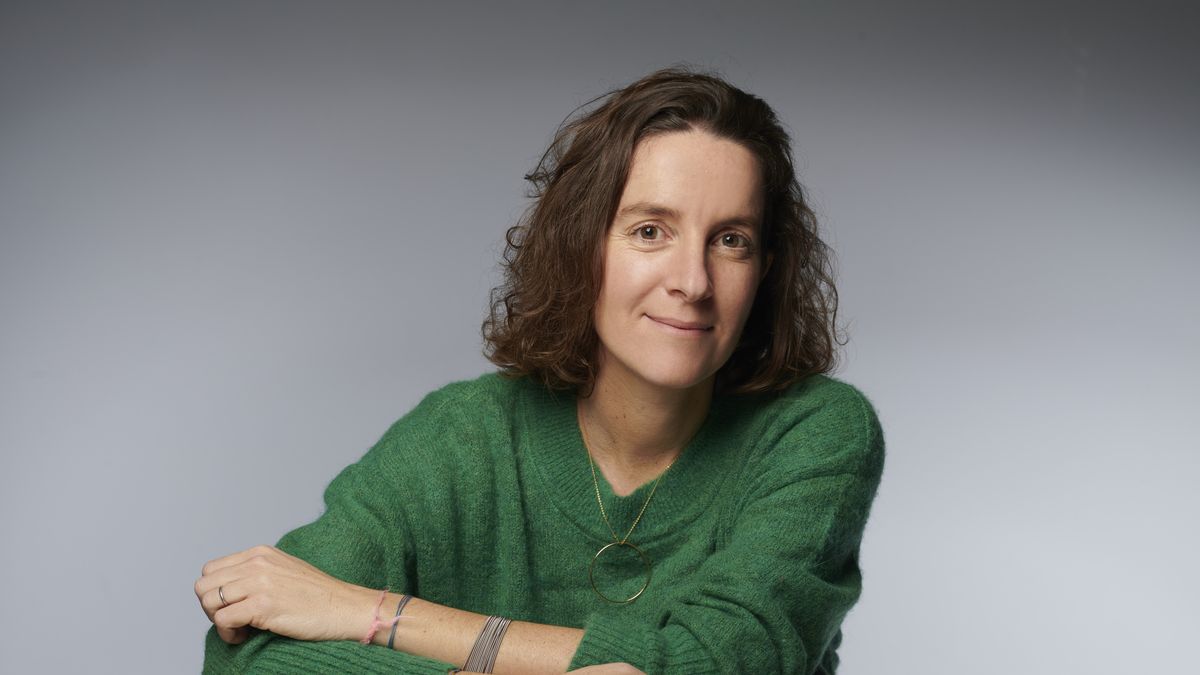Argentine Jew, 82 years old retired, with an active life of meetings with friends, opera at the Colón and art classes on Zoom, “Ruth” (Seix Barral) is a model of the new old age in the novel of Adriana Rivaauthor of the stories of “Angst” and the novel “The salt”We talked to her.
Journalist: What made you want to show in a novel what Pacho O’Donnell defines as the new old age?
Adriana Riva: For some time now, I have been following the changes that are taking place in the last stage of life. I discovered that there are not many fictions that, leaving aside the sad and depressing, show old age in a bright and stimulating way, as another stage of life that must be passed through, in the same way as childhood, adolescence and adulthood. Not only has life expectancy been extended, but in this stage, which has been occupying an increasingly longer period of existence, the possibilities, the care, the activities, the impulses to make personal changes have increased. I thought it was good to describe old age in an optimistic way. To move away from the stereotypical vision of the elderly as the grandmother or grandfather who takes care of the grandchildren, and to show that, although the elderly can do that, they have their own interests and reasons that motivate them. From all of that arose what is now Ruth’s story.
Q: How did you choose as a model a retired, Jewish, 82-year-old widow, former doctor, with children and grandchildren?
AR: The starting point was my mother, who has many of the characteristics of Ruth: a Jewish woman, older, widowed, professional, with a very active life, she likes opera, goes to the Colón, and is very interested in the visual arts. In other words, from the start I had an inspiring muse. But I didn’t stop there. I have other examples of older women, grandmothers, aunts, mother-in-law, friends and acquaintances, from whom I have taken traits and information to bring the character to life.
Q: Is Ruth more interested in her friends than in the children and grandchildren who come to visit her?
AR: Her children are independent and in their forties. They have not left her alone, they call her on the phone, they go to see her, they are interested in her. Ruth, who is still the mother, still loves them, but the most important thing in her life is no longer the maternal aspect. That was a stage she left behind. She has already fulfilled her role. That is over and she is not going to stop at being just a mother. The children are grown up now and have to do their own thing, she says. At this stage, the most important thing for Ruth is herself and people her age, her friends, those who are on the same wavelength. Added to this is her current interest in the visual arts and her usual interest in culture and opera. At the same time, there is a certain attitude of reserve, of protection, of keeping her distance, of not getting involved, perhaps so that she can live her life as she wants. Perhaps this is due to her training as a doctor or to small marks that life has left on her. Her friend Fanny tells her: Ruth, you seem like Alice’s cat, you are always leaving, you are always escaping. Perhaps she escapes into herself.
Q: Did you seek to have an attitude of closeness and independence towards the Jewish world at the same time?
AR: Ruth is Jewish to the core, but she is not the typical Yiddish mame or the classic fool. She prefers the cultured, intelligent, sententious phrase to the Jewish joke. She is dazzled by Judaism when she finds that every artist or writer she likes is Jewish. That obsesses her. At the same time she has a personal attitude towards Israel and its politics, for example, she openly criticizes Netanyahu. A member of the diaspora, she believes that there are many ways to be Jewish. It is to feel a feeling, a religion, a people, that calls you and from which you cannot escape. She tells her son: if you think that by stopping eating gefilte fish you are less Jewish, if the Nazis come here the next day you are totally Jewish.
Q: Ruth comments on operas, recounts dialogues with her therapist and friends, but what is vital to her is her art class on Zoom.
AR: It is the driving force of her life. She discovers, for example, Hilma af Klint, and she never stops wanting to know more about her. She discovers that art is endless and that there are more and more artists to discover. Ruth’s intrigues provoke intrigue. If she writes down “Aby Warbur, the summary of everything that the human being knows, ended up in the madhouse” or “Giorgio Morandi, potiches, does not look like anyone and no one looks like him; favorite”, she leads to Google to find out a little more or to see the work she refers to.
Q: What books helped you write “Ruth”?
AR: A lot. “Old Age” by Simone de Beauvoir, a great book that says that old age is a destiny and that you have to face it creatively, not let yourself go. The novel “Light in February” by Elizabeth Strout. “A Life in Brussels” where Chantal Akerman, whom I quote, talks about her elderly mother. The old people in “The Buried Giant” by Kazuo Ishiguro. I went into bookstores and asked: what is there about old age that is neither depressing nor about Alzheimer’s, oh, I already have Cicero. Pacho O’Donell’s book had not yet come out when I was writing “Ruth.” I developed her story in Federico Falco’s workshop. I always write in workshops because I am a daughter of rigor and I trust the gaze of the people who work on the text with me. It is something that provokes enthusiasm, it drives me to continue writing.
Q: What are you working on now?
AR: Something more experimental, more poetic. Poetry always sustains me. I work on it in Laura Wittner’s workshop.
Source: Ambito
I am an author and journalist who has worked in the entertainment industry for over a decade. I currently work as a news editor at a major news website, and my focus is on covering the latest trends in entertainment. I also write occasional pieces for other outlets, and have authored two books about the entertainment industry.




